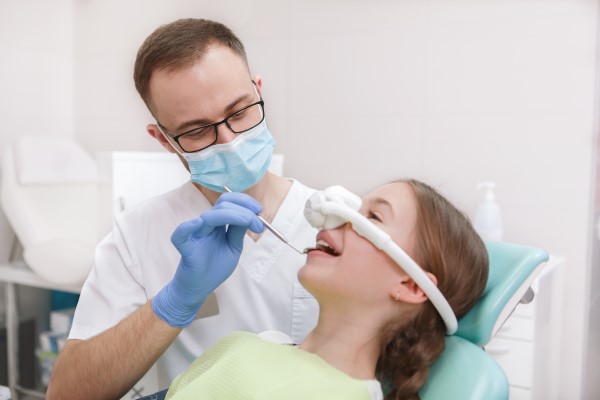Image Source: Google
Visiting the dentist can be a daunting experience for many individuals, especially those who suffer from dental anxiety. However, with the advancements in sedation dentistry, patients now have the option to undergo dental procedures in a relaxed and comfortable state. In this comprehensive guide, we will delve into the world of sedation dentistry, providing insights and information to help alleviate any fears or concerns you may have about visiting the dentist.
The Basics of Sedation Dentistry
What is Sedation Dentistry?
- The best sedation dentistry involves the use of sedatives to help patients relax during dental procedures.
- It is particularly beneficial for individuals with dental phobia, fear of needles, sensitive gag reflex, or low pain threshold.
- There are different levels of sedation available, ranging from minimal sedation (awake but relaxed) to deep sedation (almost unconscious).
Types of Sedation
- Nitrous Oxide: Also known as "laughing gas," nitrous oxide is a mild sedative administered through a mask placed over the nose. It induces a relaxed and euphoric state throughout the procedure.
- Oral Sedation: This involves taking a prescribed sedative medication before the procedure to help alleviate anxiety and induce relaxation. The dosage can be adjusted based on the patient's needs.
- Intravenous (IV) Sedation: Administered through a vein, IV sedation provides a deeper level of sedation. Patients may remain conscious but feel groggy and have little to no memory of the procedure.
- General Anesthesia: Reserved for complex procedures or patients with severe dental anxiety, general anesthesia renders the patient unconscious throughout the procedure.
Who Can Benefit from Sedation Dentistry?
Sedation dentistry can benefit a wide range of patients, including:
- Individuals with dental phobia or anxiety
- Patients with a strong gag reflex
- Those requiring extensive dental work in a single visit
- Individuals with a low pain threshold
- Patients with special needs or medical conditions
The Benefits of Sedation Dentistry
Reduced Anxiety
- Sedation dentistry helps alleviate anxiety and fear associated with dental visits, allowing patients to relax throughout the procedure.
- It can make dental visits more comfortable and pleasant for individuals who would otherwise avoid seeking dental care.
Increased Comfort
- Patients under sedation experience increased comfort during procedures, as they are in a relaxed state and may not feel pain or discomfort as intensely.
- It can also help patients with a strong gag reflex or difficulty sitting still for extended periods to undergo treatment more easily.
Time Efficiency
- By inducing a relaxed state in patients, sedation dentistry can help reduce the perceived length of procedures, making them seem shorter than they actually are.
- It allows dentists to work more efficiently as patients are still and cooperative during the treatment.
Is Sedation Dentistry Safe?
While sedation dentistry is generally safe, it is essential to discuss your medical history and any existing health conditions with your dentist before undergoing sedation. This will help ensure that the appropriate sedation method and dosage are selected to suit your individual needs.
Factors to Consider for Safety
- Medical history, including allergies, current medications, and underlying health conditions
- Monitoring during sedation to ensure vital signs remain stable
- Qualifications and experience of the dental team administering sedation
- Proper postoperative care and follow-up instructions
Preparing for Sedation Dentistry
Consultation with Your Dentist
- Schedule a consultation with your dentist to discuss your concerns, medical history, and the type of sedation that may be suitable for you.
- Your dentist will review the procedure, potential risks, and benefits of sedation dentistry to help you make an informed decision.
Preparation Instructions
- Follow any preoperative instructions provided by your dentist, such as fasting before the procedure if required for oral sedation or IV sedation.
- Arrange for a responsible adult to accompany you to and from the appointment if undergoing sedation that may impair your ability to drive.
Conclusion
Sedation dentistry offers a valuable solution for patients who experience anxiety or fear when visiting the dentist. By understanding the different types of sedation available, as well as the benefits and safety considerations associated with sedation dentistry, individuals can take proactive steps to address their dental concerns in a comfortable and stress-free manner. Consult with your dentist to explore the option of sedation dentistry and embark on a journey towards optimal oral health without fear or anxiety.

